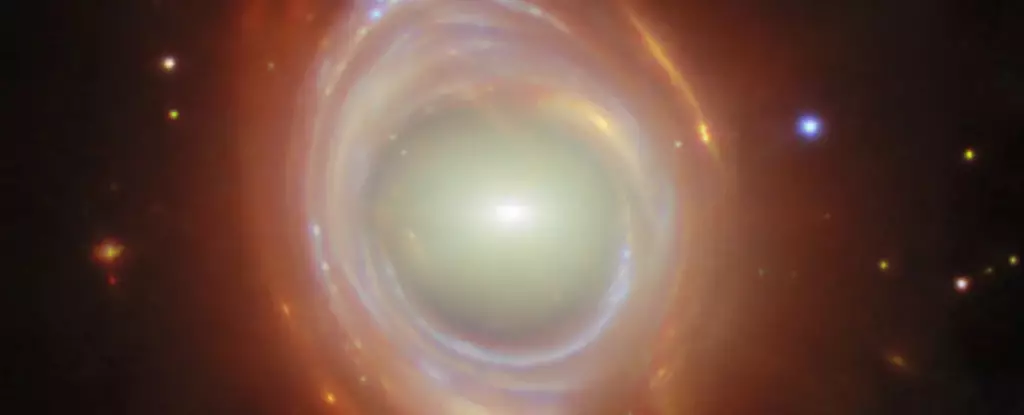The gravitational deflection of light, a profound prediction stemming from Einstein’s theory of general relativity, gives us a captivating insight into the cosmos. Since its first empirical validation during the 1919 solar eclipse, this phenomenon has invited countless astronomers and physicists to ponder the intricate relationship between light, gravity, and the warped fabric of spacetime. The brilliance of this effect becomes apparent when we consider that stars, appearing merely as distant pinpricks in the night sky, can reveal secrets of the universe through their interaction with massive celestial bodies.
The Warped Beauty of Gravitational Lensing
Gravitational lensing extends beyond its initial observation, radiating a duality of distortion and magnification that highlights the splendor of the universe. Far-off galaxies, often hidden from our view by closer ones, treat our eyes to a more expansive view via this cosmic tether. As light from these obscured galaxies dances around massive foreground objects, we witness an artistic rendition of the universe — a swirling canvas adorned with shapes and colors born from the gravitational embrace of stars and galaxies. This lensing effect is not merely a visual curiosity; it’s a fundamental tool in modern astrophysics, revealing the most distant objects that our predecessors could only dream of observing.
The Marvel of Einstein Rings
One of the most breathtaking manifestations of this phenomenon is the Einstein Ring. This striking circular distortion occurs when a distant galaxy is precisely aligned behind a closer galaxy. The light from the faraway galaxy bends around the foreground galaxy, illuminating it in a remarkably perfect circle. Contrary to Einstein’s skepticism expressed in 1936, modern telescopes have shattered our limitations, allowing us to capture many instances of these cosmic rings. With the advent of the James Webb Space Telescope (JWST), we have unveiled exquisite examples of Einstein Rings, turning what might have been lost to time into vibrant representations of cosmic interplay.
The SMACS J0028.2-7537: A Recent Jewel
Among the splendid discoveries made by JWST is the mesmerizing image of a recent Einstein Ring found in the galaxy cluster SMACS J0028.2-7537. The foreground elliptical galaxy serves as a lens, refracting light from a distant spiral galaxy that bears striking similarities to our own Milky Way. This celestial alignment, occurring billions of years in the past, is a poignant reminder of the vast, intricate connections woven throughout the universe. These photographs are not merely scientific achievements; they evoke a sense of wonder and inspire a deeper appreciation for the cosmos’s beauty.
The Subjective Nature of Cosmic Beauty
Interestingly, the beauty captured in these images is highly subjective and location-dependent. An observer located in a different galaxy may miss out on the alluring celestial dance unfolding before us. This introduces a philosophical dimension to our understanding of beauty within the universe — it is affected not just by our perspective, but by the very fabric of space and time that binds the cosmos together. As we explore these celestial phenomena, we are reminded that our vantage point is as crucial as the celestial dance itself, enabling us to embrace the uncanny wonders that surround us.


Leave a Reply